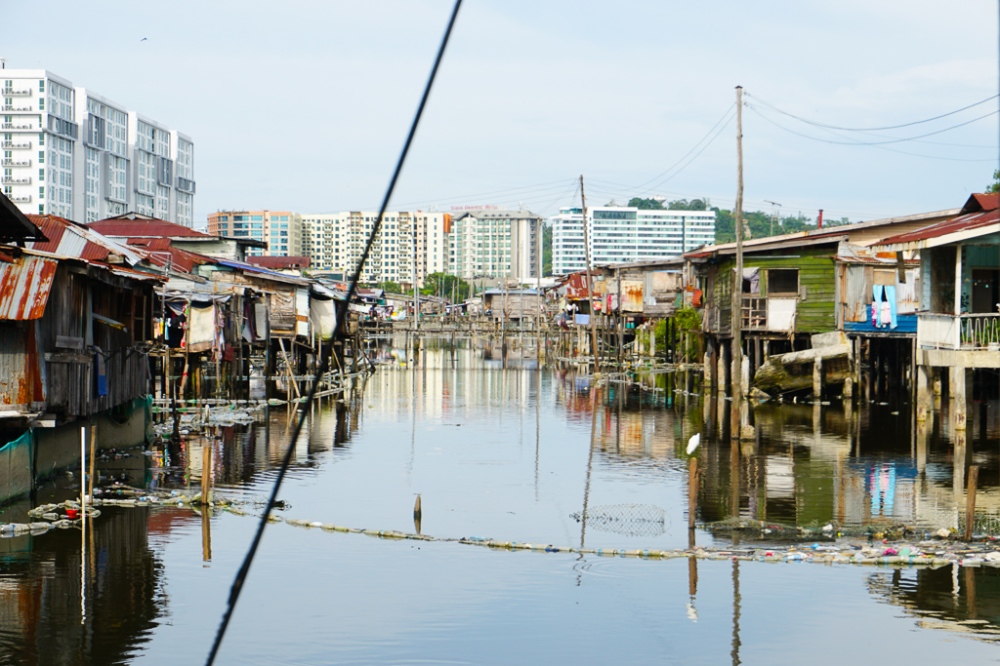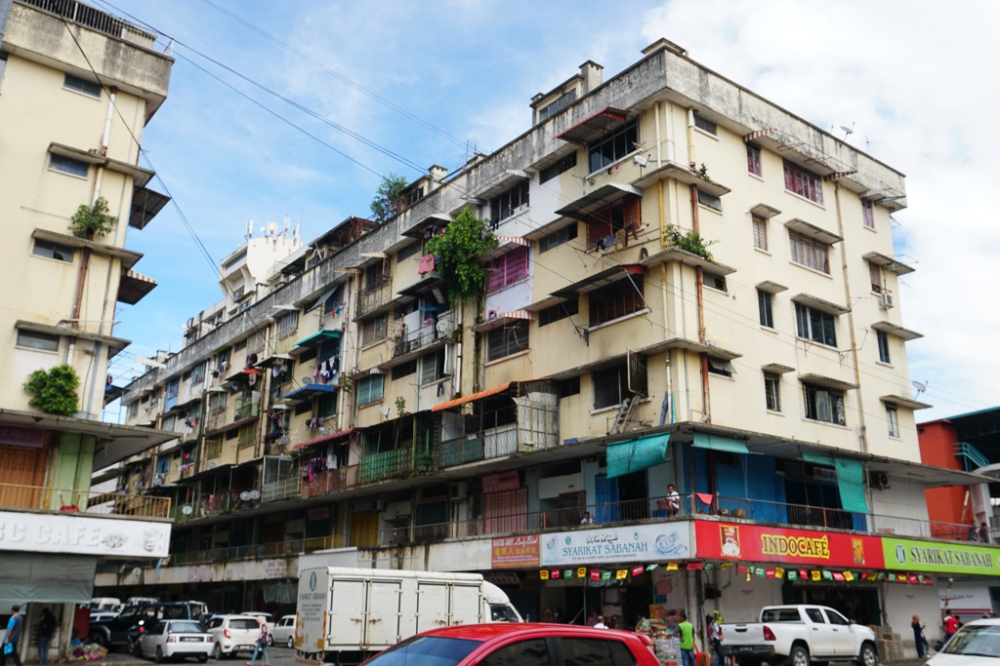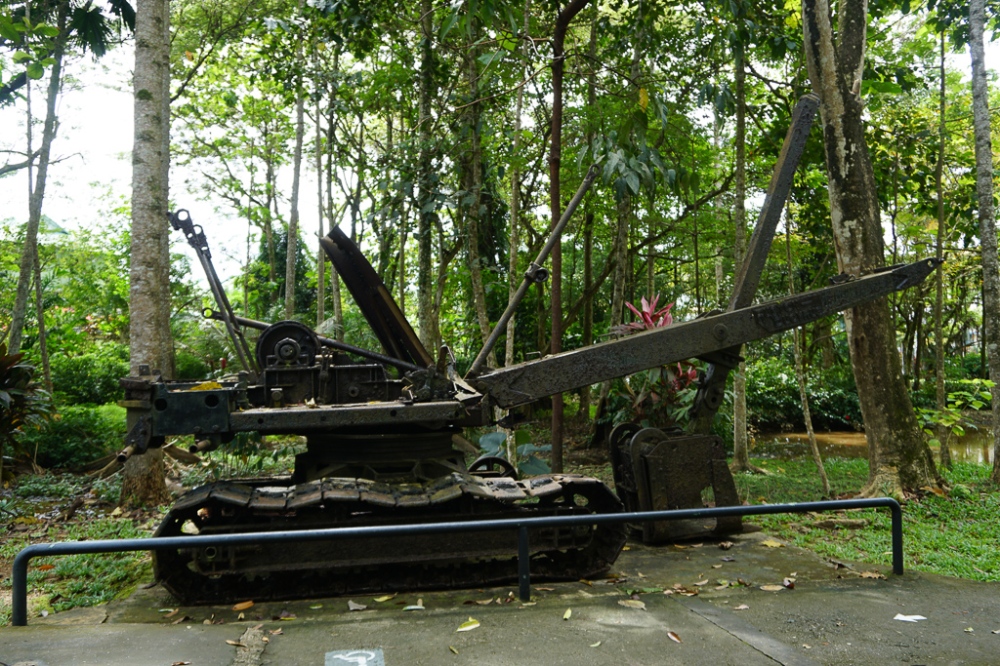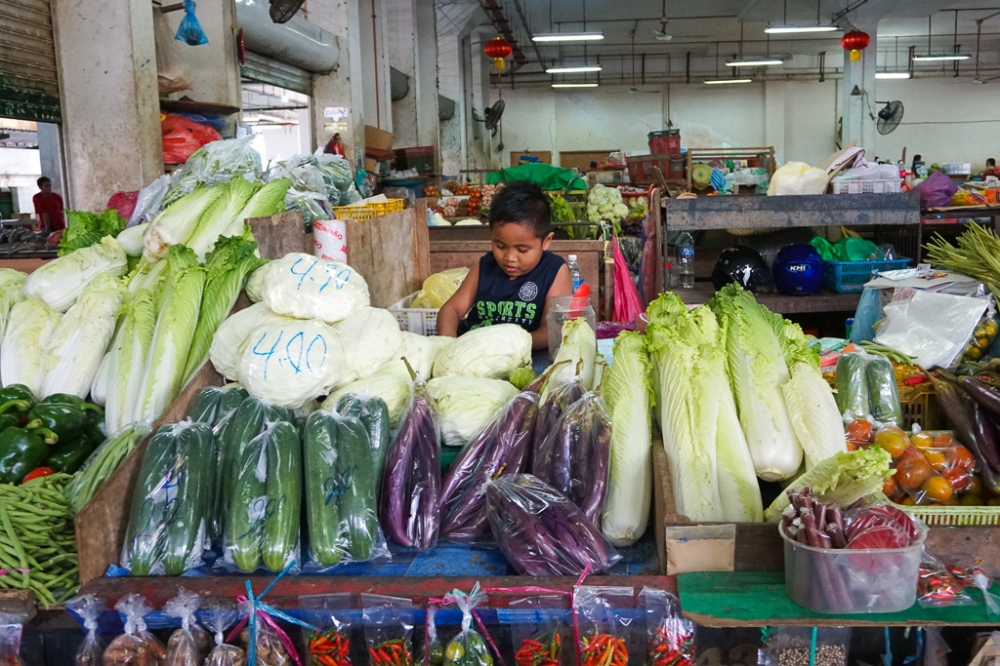We’ve spent the last week or so hiking in various parts of Borneo, more on that in its own set of blogs but for now here’s a few insights and comparisons from our first week in Malaysia.
Transport
We landed late in the evening from the Philippines. The first thing that really drew our attention is how much it feels like America to us in parts of some of the bigger cities. The road layout is really similar; wide, sweeping boulevards with palm trees, and some of the housing looks really similar too.

Malaysia has Uber, and its competitor Grab. Car ownership seems pretty common here, unlike in the Philippines where everyone has a motorbike.
Catching the bus is quite an unusual affair. The cities have set local, mini-van routes with stops but there’s no set timetable, it’ll leave the terminal when it’s full – so you just wait at the stop till it comes along. As there’s only taxis and no trikes in Borneo we’ve ridden the bus quite a few times – it seems a bit easier to navigate that the jeepneys in the Philippines.
On the long distance bus, it has set stops, but it’ll drop you off and sometimes even pick you up anywhere along route. Unlike in the Philippines where the price is set, we’ve needed to haggle the price in some places. It’s hard to know what the price should be but I know we’ve often paid a little over what the locals have paid, even if we do haggle. We found it helpful to always ask the hotel how much it should be so we know roughly what the locals pay.
Housing
There is the same divide between rich and poor as there is in the Philippines. In Kota Kinabalu there’s an area that has seen a lot of investment in development – vast, air conditioned malls and spacious, modern housing – overlooking the existing ‘slum’ – wooden shacks built on stilts over what is now heavily polluted water accessible only by rickety, wooden walkways. These shacks do have electricity and some even satellite dishes though!

In Sandakan most of the existing, beautifully fashioned, wooden housing was flattened during World War Two. What rose up were rows upon rows of identical concrete blocks with the same slatted glass windows that we encountered in the Philippines.
It’s reminiscent of some of the housing blocks around London; somewhat forgotten in terms of maintenance and quite shabby looking from the outside. They are however still very much lived in, with satellite dishes and vast amounts of washing hung on the outside, and even plants to decorate the windows. Some of the flats have even fashioned themselves a balcony, using the shade cover for the street, and fencing it in – whether it was originally designed to support the weight is almost certainly an unasked and unanswered question.

In Ranau the town centre felt like a throwback to the 1960s. Again formed in concrete blocks, but this time very much low rise. The town centre had been thoughtfully laid out, with a park and public toilets, although was mostly not very accessible for disabled people, there were lots of different levels, steps and open gutters to navigate as you walked.
Technology
Internet speeds and 3G/4G coverage in Malaysia is in a totally different league to that of the Philippines. In many places in the Philippines the internet was dire, almost to the point of being un-usable, and we’d often get no service on our phone, especially in some of the more remote places like Siquijor and on our journey through Palawan to El Nido. In Malaysia the Internet is fast and the G coverage is very good.
Although colonialism does not appear to have left its mark on modern street design, it is quite noticeable in some of the exhibits of earlier technologies. Our visit to the Sabah Museum in Kota Kinabalu revealed that the British built a railway here to help move goods to and from the port, and much of the equipment came from the UK, even down to the lamps, which were manufactured in Birmingham.
Inside the Science building there was a 1960s TV and radio set up – again a lot of the equipment had been manufactured in Suffolk of all places, or arrived from Japan.

I’d have quite liked to have gone on the railway, I really like steam engines (probably something to do with my childhood I imagine – I loved Thomas the Tank!) but at over 300RM per person (around £60) it was well out of our budget.
The piece of technology that I was most interested in was a trench digger that forms part of Sandakan’s War Memorial Park – for the British and Australian Prisoners of War, and the local labourers, that lost their lives during the Japanese invasion, and subsequent occupation of Borneo.
The trench digger, manufactured by Ruston Bucyrus at some point in the 1930s, was shipped all the way from my home town, Lincoln. During the occupation the POWs were instructed to build an airstrip for the Japanese, the trench digger would no doubt have come in handy so somebody in the camp sabotaged it in order to slow down their enemy’s plans.

Food
Food in the Philippines was really mixed, a lot of it gave us stomach ache. Most of it was rice based, and service was usually very slow. There were a few places we really enjoyed eating, I don’t know whether to be surprised or not that these places were usually owned by westerners? In terms of local food, we loved chicken inasal from Manokon Country in Bacolod, basically just BBQ chicken with rice! And my favourite street food was caramelised bananas served on a stick….admittedly I didn’t try anything else.
Malaysia’s population is made up of native Malays, along with migrants from China and India. So far I’ve really enjoyed the food scene, particularly the Indian influence – Roti Canai, which is a crispy, yet fluffy type of flat bread served with a thin dhal style dip, has quickly become my new favourite food. They have loads of different Roti to choose from, stuffed with anything from chicken or sardines to condensed milk and bananas!

One thing I miss from home is tap water. Sounds silly doesn’t it! But you can’t drink the tap water in Asia, so we’re constantly having to buy bottles and can’t usually refill them which is expensive and bad for the environment.
Value for money
Malaysia wins hands down on this one so far. Everything is better quality, but cheaper. It’s also a bit easier not to get ripped off for being foreign. One night in Manila (Philippines) we wanted to catch a taxi home, we flagged down FIVE taxis before we finally found a driver who would put the meter on, even then he wanted an extra 50 pesos. The metered journey cost 82 pesos – every other driver wanted no less than 300 pesos, 400 in two instances!
I know we are privileged to be travelling, but we are on a budget – if I was asking to be dropped off at the Shangri La or the Hilton I might understand better but almost everywhere we’ve spent <£20 a night per room. Worse still it’s actually illegal for them to refuse us on this basis, but we only found this out after.
Accommodation is cheaper to rent and better constructed in Malaysia. It never really occurred to me how good we’ve got it in the UK. Simple things like holes being filled around windows and air con units, windows that actually keep out the noise and doors that close properly. That said, the hotel we are in at the moment doesn’t have a proper bathroom, rather two shower cubicles, except one has the toilet in….and the glass doesn’t go to the ceiling, so there’s absolutely no privacy whatsoever!
Well written experience. Really enjoy reading. Just like to put something right below.
Malaysia has Uber, and their own version, Grab:
Grab is not Malaysian version. Wish it is. It’s another ride-hailing service like Uber but founded in Singapore.
The existing ‘slum’ in Kota Kinabalu:
These are houses of the ‘new migrants’. Many of them are Malaysians or have documentation but some are citizens elsewhere, mostly from the Philippines. One may also find some tenants that are stateless. The ‘genuine locals’ in Kota Kinabalu live in better houses and definitely more hygenic.
Malaysia’s population is made up of native Malays, along with migrants from China and India:
Unlike in West Malaysia, the majority of the populace in Sabah, Borneo, is the indigenous group like the Kadazan-Dusun, Bajau and Murut. Chinese makes up the main non-indigenous population. There are very little Indians here. Nowadays, there are also a lot of the ‘new migrants’/non-citizens, mostly from the Philippines and Indonesia, which may be the largest ethnic group in the population today. Unfortunately, they tend to give tourism here a bad name (e.g. the ‘slum’).
Value for money – Malaysia wins hands down on this one so far:
Definitely agree 100% with you on this.
Keep up with the good writing and happy travelling.
LikeLiked by 1 person
Thanks for your comment!
It’s interesting to hear a more accurate demographic split. Now I think about it we met quite a few Filipinos/as working in hotels, spas etc. When comparing the quality of life in Malaysia to that of the Philippines it’s easy to see why they’d be attracted to working here. We did also meet Indian immigrants who owned little shops and restaurants.
We saw so many beautiful houses in Malaysia, they look a lot more spacious than British houses.
I’ll edit the bit about Grab 🙂
LikeLike